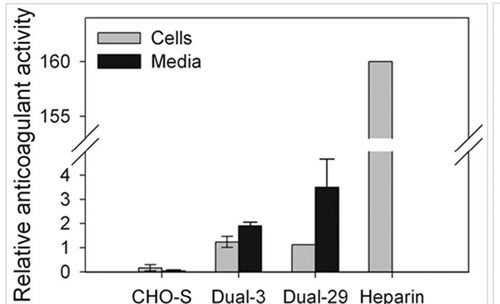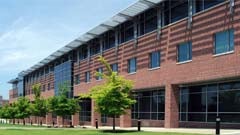Heparin, a natural product of mast cells, is stored in mast cell granules and is released with histamine on type-1 allergic response leading to mast cell degranulation. Metabolic engineering offers a potential approach to prepare heparin by fermentation. The metabolic engineering of bacterial cells is relatively straightforward since most of the biosynthetic pathways are relatively simple and well known, but while bacteria are both easy and inexpensive to engineer and to grow, they are not compartmentalized, lack a Golgi and thus are incapable of making all but the simplest glycoproteins. Yeasts are eukaryotes, and have a Golgi, but do not make GAGs and are missing the required ability to sulfate polysaccharides. Mast cells cannot be grown in culture and even when converted to mastocytoma cell lines grow very poorly and thus are not good candidates for metabolic engineering.
Chinese hamster ovary (CHO) cells are an ideal candidate for the production of heparin. They already have the metabolic apparatus required to make the related GAG, heparan sulfate, and are used in the commercial production of glycoprotein drugs and thus are the target of our metabolic engineering studies.
We bioengineered CHO cell lines, which use the heparan sulfate biosynthetic pathway to produce heparin, by transfecting them with enzymes required for anticoagulant heparin production. Anticoagulant activity of the final product was only modestly increased, which led us to study the enzymes of the heparin biosynthetic pathway in more detail with the aim of improving upon our system.

We used bioengineered mastocytoma cells, which produce anticoagulant heparin, to study the localization and activity of heparin biosynthetic enzymes. Data obtained from these studies led us to bioengineer CHO cell lines with optimal localization of the enzymes.
Currently we are working on the development of assays to assess the activity of the bioengineered enzymes. We are also comparatively profiling HS/HP biosynthetic enzymes, their effect on HS/HP composition and HS/HP biological activity in CHO stable clones and other celllines, including the mastocytoma cell line.
